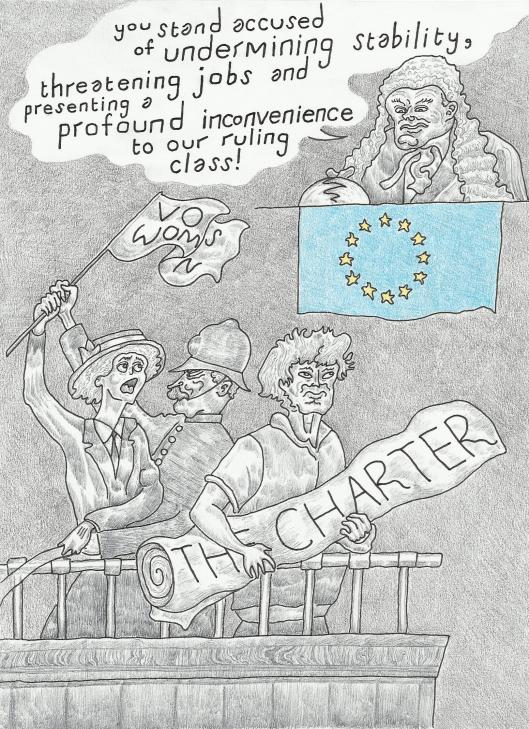Tags
Brexit, Democracy, EU Referendum, Euro Stem Cell, European Commission, European Union, Horizon 2020, Kyrgyzstan, Opinion, Politics, Regenerative Medicine, Research and Development, Shahsanem Murray, Stem Cell Research, Technology
Last week I was lucky enough to join the Kyrgyz author Shahsanem Murray for coffee. I have been invited to write the introduction to her forthcoming book, which is an espionage-themed romance, set partly in Scotland and partly in Kyrgyzstan. We had the pleasantest of conversations, and it should have afforded a brief exotic getaway from the EU referendum, but some of the most thought-provoking things that she said leapt out of their original context and reconnected me at once with the Brexit debate.
The withdrawal of the Soviet Union from Kyrgyzstan in 1991, whilst delivering democracy and self-determination for the Kyrgyz people, nonetheless corresponded with a gigantic wrapping up of scientific research. The Soviets had, in their own lumbering way, a genius for consolidating resources on a vast scale. For example, they had nominated Kyrgyzstan’s Lake Issyk-Kul as the prime venue for testing torpedoes, leading every elite scientist across the empire who had something to contribute to this field to filter down to Kyrgyzstan. Clearly the Soviet system was doomed from the cradle, but from the perspective of Kyrgyzstan, an innocent mountain nation with not much of a history, its ambition seemed striking, its modernity exhilarating. When the Soviets left, they took their institutions with them. Some Kyrgyz workers with scientific educations even went back to being farmers and housewives.
We are unlikely to witness such desolation in a post-Brexit UK, however disruptive the aftershock. But this is a question on which I am conscious of being pulled in two different directions. I am voting for Leave because it promises the rehabilitation of mass-participatory democracy. I also want to see the rapid industrialisation of stem cell technology for the masses, an unprecedented expenditure on revolutionary treatments which might one day prolong human lifespans for hundreds of years. And one would assume that the European Union, with its power to combine resources and expertise across a continent, would offer the best means of achieving this.
In theory, it does. Theoretically, a project such as the EU’s current funding programme Horizon 2020 provides the most effective model of coordinating scientific research amongst the twenty-eight member states. In 2015, Horizon 2020 spent about €10 billion of the EU’s €145 billion budget on research and innovation. This gives every nation, at least in theory, the incentive to develop the finest scientific institutions, so that they will get more out of Horizon 2020 from their scientists’ successful bids for funding than they put in through their overall contribution to the EU budget. The design of this system is canny, though its engine is obviously national competition rather than cooperation.
In practice, however, Horizon 2020 fails in exactly the same area where every EU institution fails on everything: democracy. Imagine, for instance, that there is a website which is campaigning for radical levels of investment in stem cell research. Let’s call this website Tychy. Who does this website begin to lobby about the reevaluation of funding priorities?
Euro Stem Cell, the agency – or organisation – or institution – or “hub” – or whatever it is – which is responsible for everything European and stem-cellular, comports itself as “a partnership of more than 400 stem cell and regenerative medicine labs across Europe.” It does not appear to have a chairperson or a chief executive; it is apparently led by a vapour. You can read its information sheets, get involved, and learn about its collaborators and their projects, but you end up with no idea of where the power actually lies.
I feel sorry for criticising these people, because their website is quite sincere in publishing masses of educational material about research projects and project challenges. It is just that none of this concerns power and accountability. To illustrate the nature of the problem, try finding out what proportion of Horizon 2020’s budget goes towards Euro Stem Cell initiatives. The figure must be out there somewhere, but it seems that you have to Google and read countless policy documents in order to unearth it. Most campaigners and patient advocates will be deterred by how this significant information has been misplaced within the landfill of glossy factsheets. Perhaps they are meant to be.
Moving on to Horizon 2020 itself and it is even worse. I can understand how the people who assess the bids for funding might need to remain anonymous, so that they cannot be pestered by special interests. Yet there still has to be an identifiable leadership which takes overall responsibility for the decision making. Does this leadership reside in the European Commission, or in the parliamentary scrutiny of the Commission’s decisions? The Royal Society’s analysis offers the most user-friendly resource for investigating Horizon 2020. On the budget, it writes that:
Decisions about the budget and strategic priorities of EU research funding are agreed by the European Parliament, Commission and Council.
In other words, by everybody and nobody. Meanwhile, on the expenditure:
Horizon 2020 is managed by the European Commission’s Directorate-General for Research and Innovation (DG RTD). Eight other DGs with a research dimension (Energy, Communication, Agriculture, Education and Culture, Growth, Home Affairs and the Joint Research Centre (JRC)) share ownership and responsibility for the Programme with DG Research.
Let’s push on! The European Commissioner for Research is a real human being, with a face and even a CV. He is Carlos Moedas, from Portugal, and he is… well, he is basically a banker. He comes served with that Director-General of DG Research and Innovation, one Robert-Jan Smits, a Dutchman and an arch bureaucrat. These are men who exist anonymously even when they are in front of cameras. They burble harmlessly rather than talk with any danger (Moedas: “My first priority is to advance the creation of the framework conditions that enable the full potential of European research, science, and innovation”). Neither of them has ever, so far as I can ascertain, uttered any remotely political statement.
No civil service, however replete with expertise, can be left alone to make these spending decisions because they quickly become political. Should the money available be spread widely in order to encourage poorer nations to develop their own laboratories, or would the most dramatic results derive from concentrating resources in the most elite institutions? That’s a difficult question and perhaps we should all have some say in answering it. You might be alternatively campaigning for the funding for stem cell research to be prioritised over the vast subsidies for agriculture. How, though, can the masses have access to the decision makers? How can their voices float up to those plush corridors where bureaucratic apparitions are noiselessly determining the shape of Europe’s future?
After a Brexit there will be probably less money available, at least in the short term, but there will be a counterbalancing leap in accountability. The funding will come with a minister whose backstory you know, whose politics you will either approve of or disapprove of, and who will be hopefully lying awake at night worrying about whether his department is delivering on its promises. Horizon 2020, on the other hand, is a law unto itself. There are no promises to any intelligible electorates and no penalties if there is no delivery as well.
(Although it muddies the water, I should also add that there remains an option for the UK to leave the EU and remain party to Horizon 2020. Other non-EU nations, such as Norway and most spectacularly Israel, compete for Horizon 2020’s research grants.)
The scientific consensus in the UK has been clamouring angrily for the public to turn their faces from Brexit. Thirteen Nobel prize-winning scientists, including Peter Higgs of the Higgs boson, have warned that a Leave vote would pose a “key risk” to UK science. Upon inspection, though, they are not really anxious about the money. Between 2007 and 2013, the net gain to the UK’s €226 billion of R&D expenditure from the EU was a mere 0.7%. Most pro-Remain scientists instead insist that the EU is somehow responsible for cross-border cooperation in science. Dr Mike Galsworthy and Dr Rob Davidson, in writing for the London School of Economics, are guilty of this delusion when extolling the “communal spirit” of European research. They write that “the EU is now a community of scientific talent.”
But it isn’t! All that the EU can claim to be is one of many coordinating apparatuses. If Europe’s scientists are likely to drift apart because a particular tier of the state does not guarantee them certain, largely trivial benefits, then they cannot amount to much of a “community”! We have to also challenge the premise that the best “international” community for UK scientists should be made up exclusively of countries in which white faces are a majority. Email, Skype, and low-cost flights mean that India and China are no longer remote kingdoms, to which we need to send Marco Polo to bring back scientific discoveries! What we are hearing in the Brexit debate sounds like a load of middle-aged scientists who are unlocking advanced technological secrets, whilst remaining paradoxically unaware that they are living in the twenty-first century.
Reacquainting research funding with democratic consent might lead the masses to demand more money for science and technology. What is most inspiring about the Euro Stem Cell website is the passion with which its writers have thrown themselves into educating the public. But in our democratically inadequate times, you have to wonder why they are going to such trouble. Contemporary science is like a sleek ship which is marooned on dry land, and yet to register all of the intricate pressures and rhythms of the ocean. Democratic engagement would at last set it afloat.

